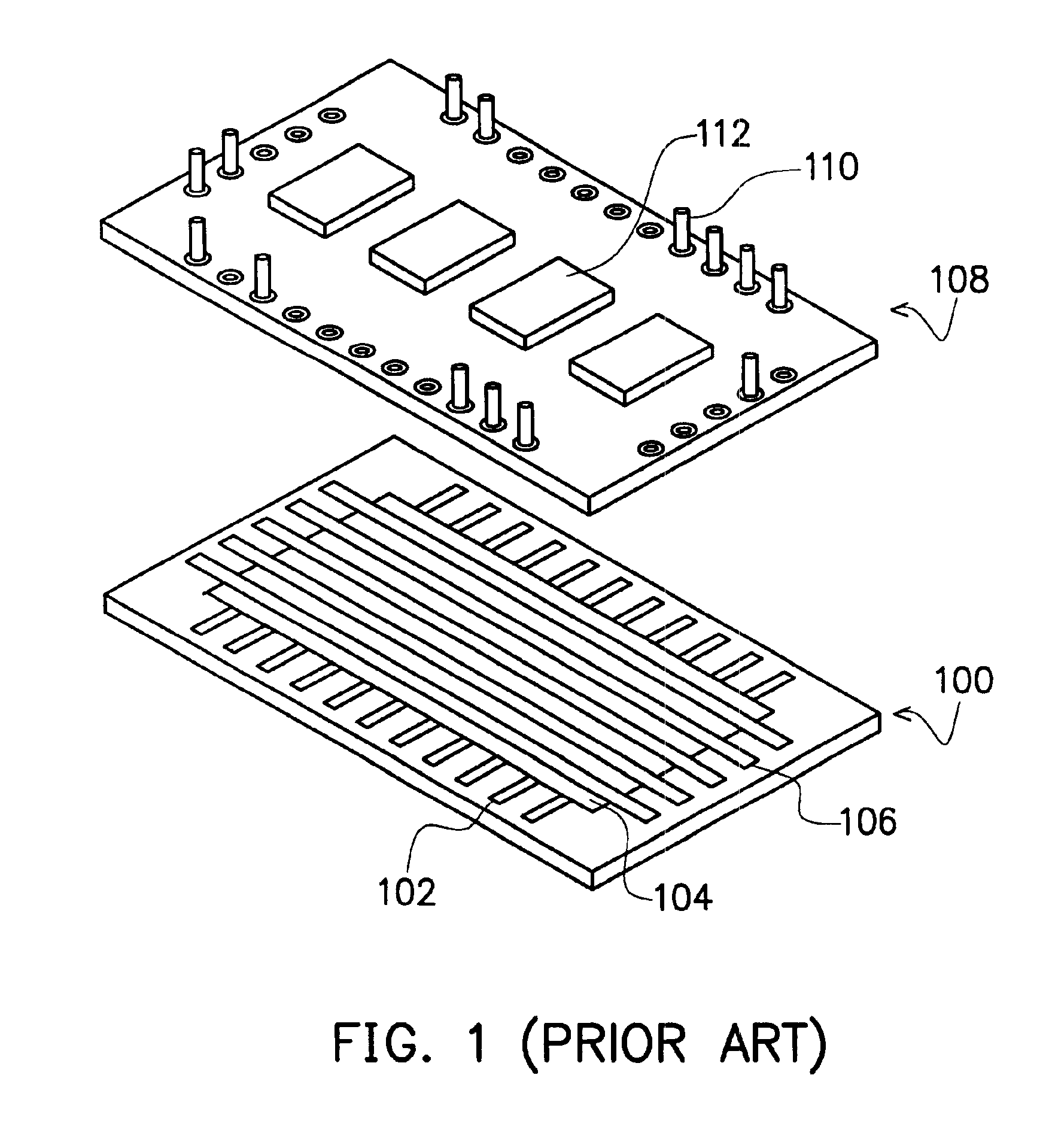Process of packaging organic electroluminescent panel
a technology of electroluminescent panels and organic electroluminescent layers, which is applied in the direction of printed circuit manufacturing, solid-state devices, printed circuit assembling, etc., can solve the problems of warpage of assembly substrates, adversely affecting the organic electroluminescent layer of organic electroluminescent panels, and the limitation of size, so as to reduce the stress of protective layers and improve thermal dissipation characteristics
- Summary
- Abstract
- Description
- Claims
- Application Information
AI Technical Summary
Benefits of technology
Problems solved by technology
Method used
Image
Examples
first embodiment
Referring to FIGS. 3-6, schematic views showing progression of steps of a process of forming an organic electroluminescent panel according to the present invention is shown. Referring to FIG. 3, a transparent substrate 300 is provided, which is comprised of, for example, glass, acrylic or the other transparent material. A plurality of anodes 302 are formed on the transparent substrate 300, wherein each of the anodes has a driving area 302a and at least one connecting areas 302b. The anodes 302 are comprised of, for example, indium tin oxide (ITO) or the other transparent material. The driving area 302a is comprised of, for example, stripes and parallel to each other. The connecting area 302b are connected to the driving area 302a.
Please referring to FIG. 4, after the anodes 302 are formed over the transparent substrate 300, a patterned organic electroluminescent layer 304 is formed over the transparent substrate 300 or on the anodes 302. The patterned organic electroluminescent lay...
second embodiment
Referring to FIGS. 9-12, schematic views showing the progression of steps of a process of forming an organic electroluminescent panel according to the present invention is shown. Referring to FIG. 9, a transparent substrate 300 is provided, which is comprised of, for example, glass, acrylic or the other transparent material. A plurality of anodes 302 are formed on the transparent substrate 300, each of the anodes 302 comprises a driving area 302a and at least one connecting areas 302b. The anodes 302 are comprised of, for example, indium tin oxide (ITO) or the other transparent material. The driving areas 302a are, for example, stripes and are arranged parallel to each other. The connecting areas 302b are connected to the driving areas 302a, serving for connection to external circuits.
Referring to FIG. 10, after the anodes 302 are formed over the transparent substrate 300, a patterned organic electroluminescent layer 304 is formed over the transparent substrate 300. The patterned or...
PUM
| Property | Measurement | Unit |
|---|---|---|
| thickness | aaaaa | aaaaa |
| thickness | aaaaa | aaaaa |
| temperature | aaaaa | aaaaa |
Abstract
Description
Claims
Application Information
 Login to View More
Login to View More - R&D
- Intellectual Property
- Life Sciences
- Materials
- Tech Scout
- Unparalleled Data Quality
- Higher Quality Content
- 60% Fewer Hallucinations
Browse by: Latest US Patents, China's latest patents, Technical Efficacy Thesaurus, Application Domain, Technology Topic, Popular Technical Reports.
© 2025 PatSnap. All rights reserved.Legal|Privacy policy|Modern Slavery Act Transparency Statement|Sitemap|About US| Contact US: help@patsnap.com



